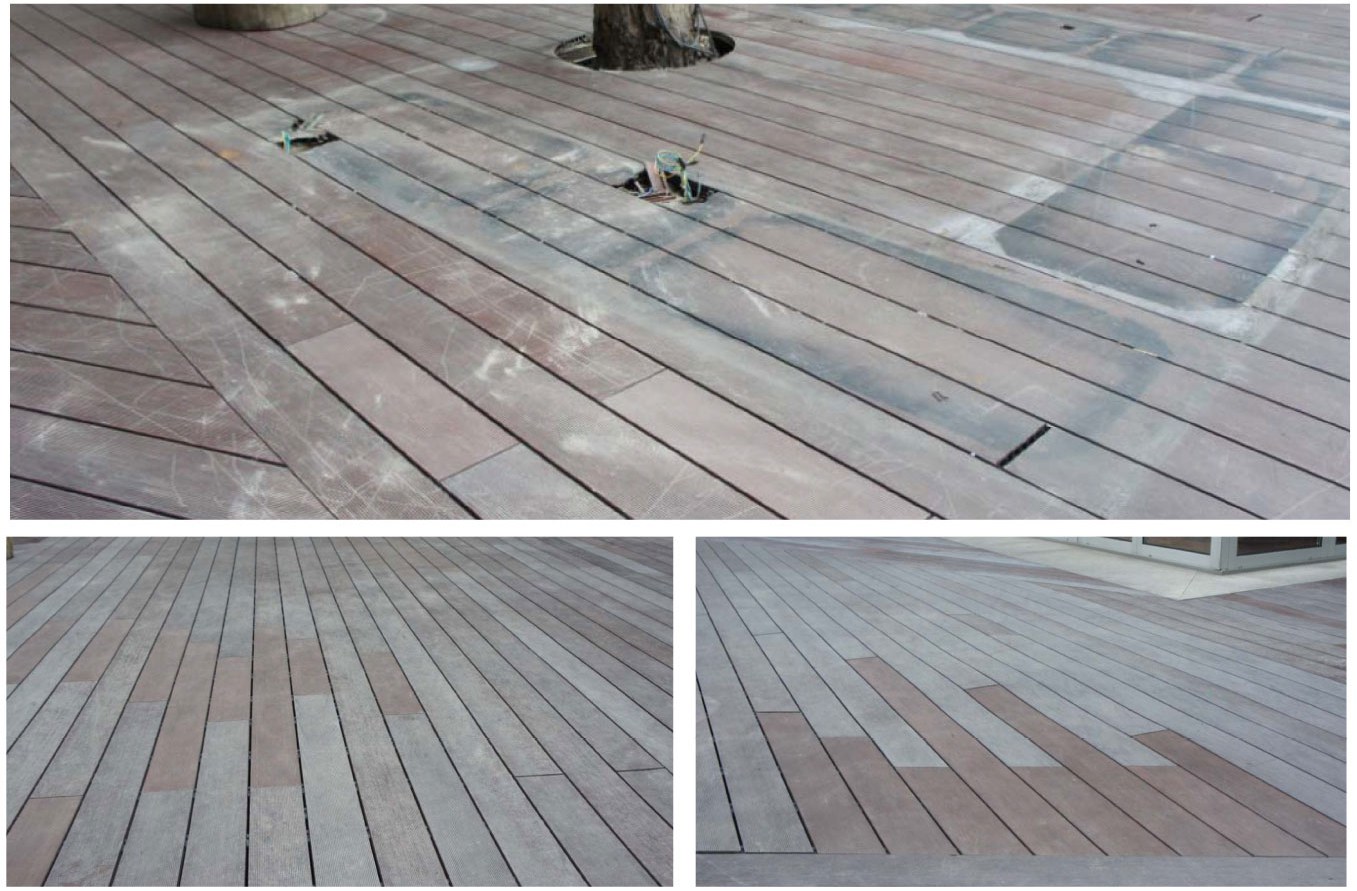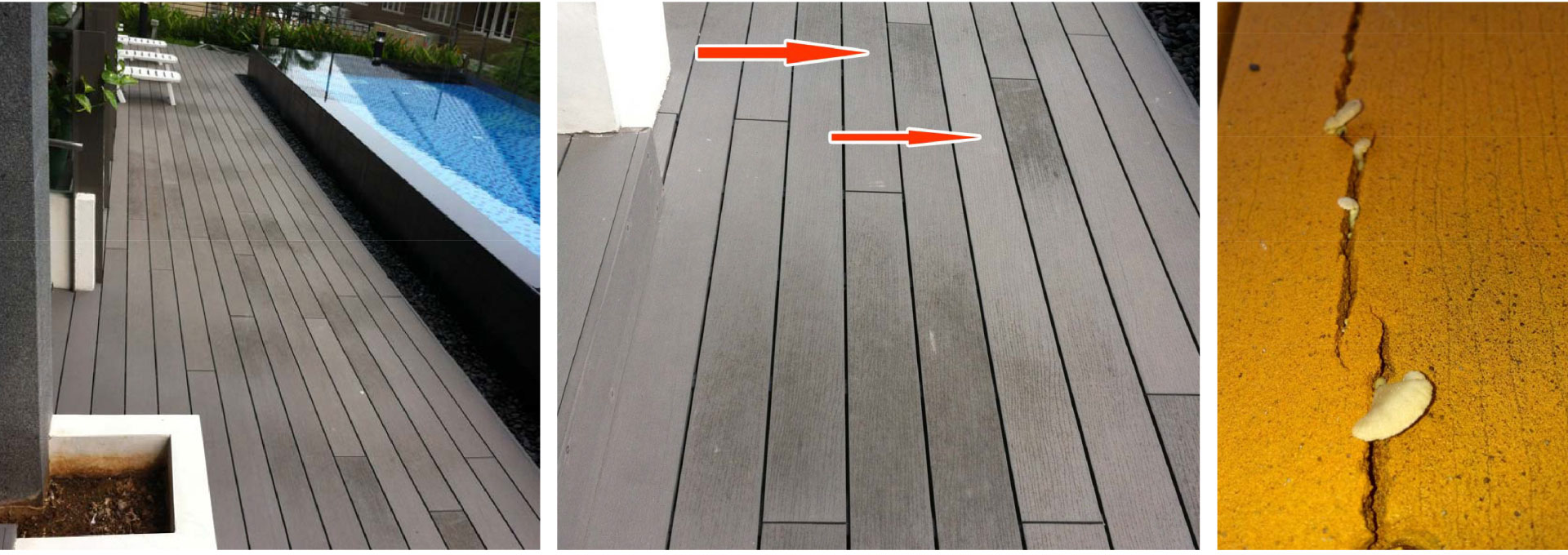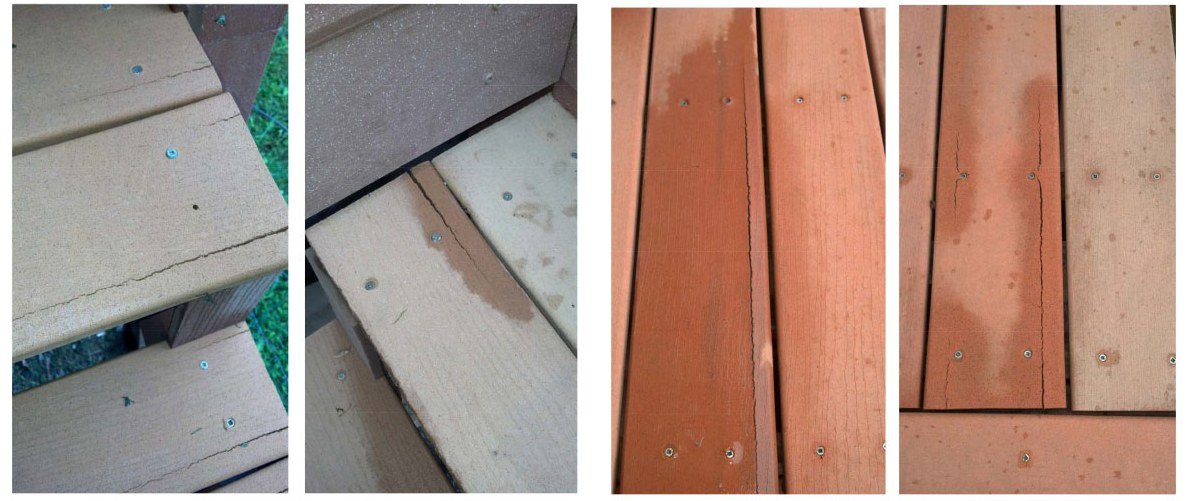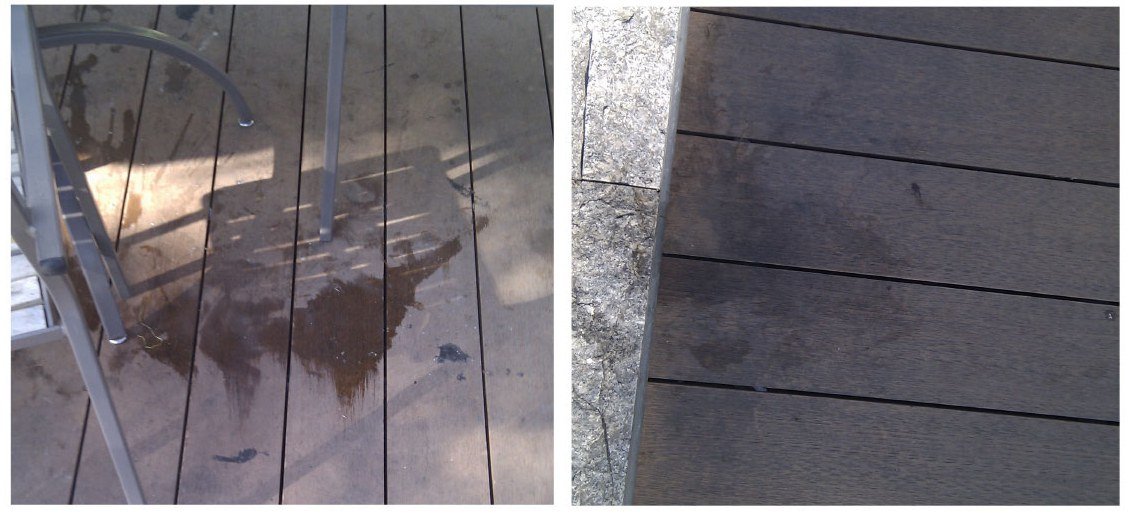No Skin?
Some capped composite wood products contain wood powder in their cap layer, which means that wood powder is still exposed to the elements and can still succumb to the problems of the first generation. First generation (non capped) composite wood has no cap layer to protect the core.
Without a capped layer to protect the core, the wood fiber is exposed to the surface and damaged by various harsh weather condition, UV, moisture, bacteria, fungus and mold. Not only the color will be faded out, the structure and composition will be degraded or even destroyed. Many severe problems have already risen during the past few years in the wood composite market.
When the first generation composite boards are exposed to the UV and water it begins to decompose. This is due to an improper amount of bounding agent and antioxidant added to the composite material. Ultimately, the wood fiber absorbs moisture with UV together which causes the composite decking to decay, crumble, deteriorate, and rot.

The reason for color fading comes from the wood fiber content. Wood is naturally going to fade if not protected, and most of the time manufacturers are brushing their boards so that damages the plastic allowing the wood fibers to be exposed to the surface. Inconsistent fading occurs due to the manufacturer’s inability to control the consistency of the colorant and raw materials being added.

3. Fungus & Mold & Mildew
Fungus, Mold, and Mildew problems are usually found in climates with extreme humidity or climate change. The wood fibers are being attacked because they are exposed to the elements and since they are not protected by a sealant or treated. Many people have tried to use deck cleaners to clean off the mold, but once the layer that is sealed/protected by the cleaner wears off the mold will just attack the other layers below.

4. Cracking
Many manufacturers add calcium/filler to their product to enhance the stiffness of the board, but it makes the board more brittle. Therefore, when installers try to drill into the board there is a potential that it might crack.

5. Scratching
The first generation composite’s scratch resistance is very poor and this is due in part because of the wood fibers. Wood fibers inherently have a low scratch resistance and when the manufacturer brushes/sands the board it creates a coarse effect on the surface allowing for even less scratch resistance.

6. Staining
Without any cap protection, any stains will be absorbed by the wood fiber or penetrate in between the wood fiber and polymer directly and permanently.








